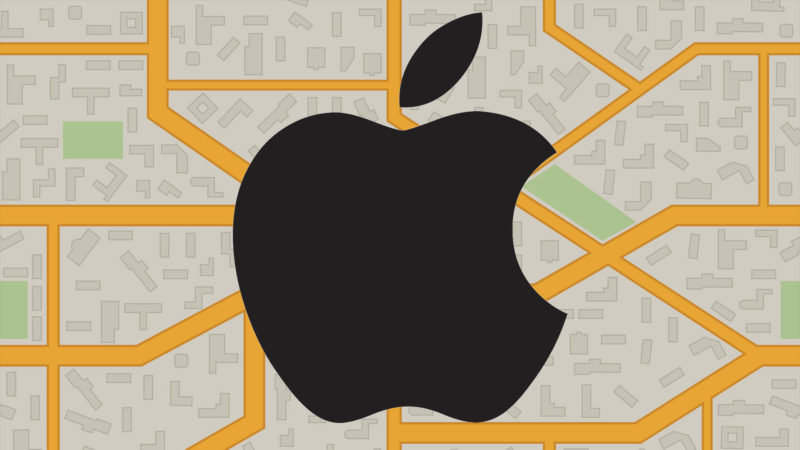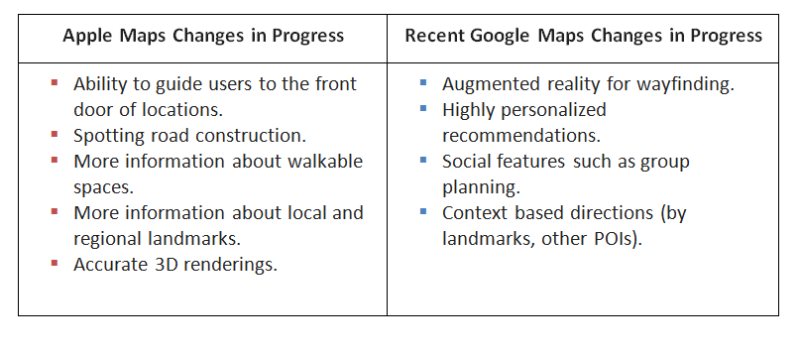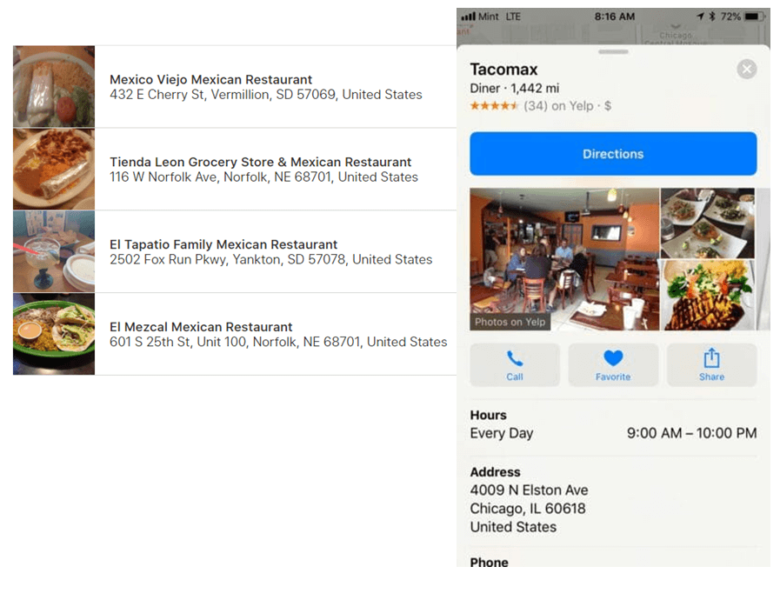Apple Maps takes a step in the right direction
Keep your business listings on Google Maps updated, says contributor Adam Dorfman -- and don't overlook doing the same on Apple Maps. Here's a look at the new and improved Apple Maps and its features.
 Over the years, Apple Maps has been widely regarded as a follower to Google Maps. It has never shaken its reputation as being an underwhelming tool beginning with a 2012 rollout that was so riddled with mistakes Tim Cook was forced to issue an apology for launching such a low-quality product:
Over the years, Apple Maps has been widely regarded as a follower to Google Maps. It has never shaken its reputation as being an underwhelming tool beginning with a 2012 rollout that was so riddled with mistakes Tim Cook was forced to issue an apology for launching such a low-quality product:
At Apple, we strive to make world-class products that deliver the best experience possible to our customers. With the launch of our new Maps last week, we fell short on this commitment. We are extremely sorry for the frustration this has caused our customers and we are doing everything we can to make Maps better.
But times are changing. On June 29, Apple disclosed to TechCrunch they will rebuild Apple Maps from the ground up. This entails, among other things, Apple taking control of the data that powers Apple Maps instead of relying on third parties.
The widely reported and commendable makeover is good for consumers and businesses — and also underscores how far Apple has to go in order to offer a strong alternative to Google Maps.
You are no better than your data
Apple needed to wipe the slate clean and do a data makeover. As the future of navigation includes the use of autonomous cars and connected cities, consumers require reliable mapping data more than ever.
It’s not an exaggeration to say that without accurate location data, businesses might as well not exist, since we live in a world in which people rely on mobile search apps to find what they want. Apple’s decision to outsource maps data back in 2012 cost the brand as inaccurate data created some embarrassing problems for Apple Maps on its rollout, such as detaching bridges from roads and labeling recreational parks as an airport:

Image: Gavan Reilly/TheJournal.ie
Relying on third-party data providers made Apple too vulnerable to someone else’s quality control issues or limitations becoming Apple’s problem and hurting its brand. The best way Apple could be reasonably sure it had eradicated bugs in Apple Maps and gain control of its own destiny was to rebuild Apple Maps with Apple’s own first-party data. And managing its own first-party data should give Apple better insight into how its customers use Maps.
Apple Maps has improved, but Google Maps is improving, too. Apple realized it needs to treat Maps like the precious asset it should be, and that starts with owning its own data. As TechCrunch reported, the process of rebuilding Apple Maps means:
… using first-party data gathered by iPhones with a privacy-first methodology and its own fleet of cars packed with sensors and cameras. The new product will launch in San Francisco and the Bay Area with the next iOS 12 beta and will cover Northern California by fall.
As Eddy Cue, Apple’s senior vice president of Internet Software and Services, told TechCrunch:
We wanted to take this to the next level. We have been working on trying to create what we hope is going to be the best map app in the world, taking it to the next step. That is building all of our own map data from the ground up.
Can Apple Maps catch Google Maps?
The existing Apple Maps interface is not changing. Rather, Apple Maps is focusing on making the app more functional, for example, making addresses more accurate, doing a better job spotting new construction, giving travelers pinpointed instructions to a location’s front door, using human-edited, accurate 3D renderings of places and identifying commonly walked but previously unmapped public areas.
These changes are good if for no other reason than to make navigation safer and to offer users an alternative to Google Maps. Competition is good; it keeps Google on its toes.
But Google hasn’t been waiting around for Apple Maps to challenge Google to get better. Google Maps has been growing by leaps and bounds on its own. Over the years, Google has continually improved Maps not only by making the tool more accurate, but also by making landmarks like businesses stronger sources of useful data, such as user reviews.

Image: https://www.justinobeirne.com/google-maps-moat
They are making Google Maps a better tool to not only find businesses but to learn about the places you’re visiting, too.
In 2018, at its I/O developer conference, Google announced a slew of impressive improvements to Maps, such as the incorporation of augmented reality (AR) to take wayfinding to another level. The incorporation of AR shows how Google Maps is not only a utility but also an innovation platform.

Image: VRFocus — from Google I/O keynote 2018
Other Maps changes Google at I/O include:
- Personalizing the app by suggesting places to visit based on your usage of Google Maps, including places you and your friends have rated. The personalized content results from Google Maps using machine learning to get smarter more about your preference and to provide better recommendations for how to use Google Maps, similar to how Spotify recommends songs to you based on how you and your friends use Spotify.
- Making Google Maps more social and shareable. Google is allowing users to create shareable short lists of recommended places to visit. Users can use the shareable lists to collaborate with friends on planning things to do, thus making Google Maps more social for users and more useful to businesses with well-developed identities on Google Maps.
Google has been making additional changes, such as the adoption of landmarks as the basis for giving directions.
For instance, Google Maps may instruct users to “turn left at McDonald’s” the way people naturally talk to each other instead of saying, “turn south at 141st Street,” which is not always helpful when a person is navigating an unfamiliar area.
It is these types of improvements by Google that underscore how far Apple has to go. It’s great news that Apple is investing on building out a solid data set to get users from one point to another efficiently and accurately, but this owned dataset is something Google began building in 2004 with its acquisition of Where 2 Technologies, an Australian software company.
By 2006, Google was already collecting its own data for the 2007 launch of Street View.
Consider some of the new features that the map teams at Apple and Google are speaking to these days.
While Apple may very well catch up with Google with the core mapping dataset, Apple will also need to improve its Points of Interest (POI) dataset substantially.
Currently, Apple relies on a number of sources to populate their POI data set. But the results often are incomplete and missing a number of locations that are relevant. For instance, one of the most popular Mexican restaurants in my neighborhood has been open for more than a year, has more than 77 Google reviews and still doesn’t appear on Apple Maps when you look for “Mexican restaurants near me” due to a mislabeled category.
Similar to the way Apple is taking complete ownership of its mapping dataset, it’s only a matter of time before Apple decides to invest in building out tools and services to allow businesses to manage their data easily and at scale. Even with all of the spam we see on Google Maps these days, the delta in having the most relevant list of locations being returned for searches is growing, not shrinking.
What businesses should do
Obviously, businesses need to put a high priority on keeping your listings on Google Maps up to date. Without question, Google Maps is the gold standard for brands. Use tools such as your Google My Business dashboard to keep your data and content up to date (including customer reviews, especially given Google’s updates from I/O).
You should also treat Apple as an important publisher; as Apple improves wayfinding, businesses with a strong presence on Apple Maps will benefit.
If you are a small business, you can claim your listing in Apple Maps Connect, but for multilocation businesses, utilizing a trusted reputation management platform can help.
Whatever path you choose, invest your resources and time heavily into your Google Maps presence, and protect your flank on Apple Maps, too.
Contributing authors are invited to create content for Search Engine Land and are chosen for their expertise and contribution to the search community. Our contributors work under the oversight of the editorial staff and contributions are checked for quality and relevance to our readers. The opinions they express are their own.
Related stories
New on Search Engine Land

